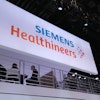
SALT LAKE CITY - German researchers have found that FDG-PET/CT can help determine when cardiac resynchronization therapy (CRT) is ineffective, and it can identify risk factors that could alter the course of treatment for patients with congestive heart failure, according to a study presented Sunday at the SNM annual meeting.
When a heart muscle is weakened, the body responds by reshaping heart tissues in an attempt to improve blood flow. The irregular shape can cause the electrical impulses between the heart's chambers to fall out of phase.
CRT regulates electrical impulses within different chambers of the heart that are not properly synchronized. Though CRT is effective in 70% of these cases, the remaining 30% of patients show no significant improvement.
Lead study author Christopher Uebleis, MD, and colleagues from Ludwig Maximilian University in Munich used FDG-PET/CT to identify reasons for poor CRT response, taking 3D fused images with anatomical information from CT and functional information from PET to guide the work of cardiovascular surgeons and ensure patients' response to therapy.
Patient enrollment
The ongoing prospective study enrolled 14 patients with a mean age of 68 years, eight of whom had obstructed blood flow and weakening of the heart. All patients underwent FDG-PET/CT imaging, with PET used to conduct a phase analysis of the movement of the heart muscle's walls to determine if the left ventricle was out of phase, and to evaluate the amount of scar tissue within the patient's left ventricle.
The analysis found that half of the patients showed positive response to therapy with signs of clinical improvement and reshaping of the heart. The other nonresponders showed little or no improvement after implantation.
The study also determined that the site where device leads were implanted in relation to scar tissue was the most important factor in determining response to CRT.
The researchers plan to evaluate patients prior to therapy to select those who would benefit from implantation and devise a treatment plan to optimize lead-wire location within the left ventricle on viable, unscarred myocardium. A clinical trial is planned to begin later this year.
By Wayne Forrest
AuntMinnie.com staff writer
June 7, 2010
Related Reading
Left ventricular dyssynchrony after MI predicts ventricular remodeling, October 25, 2007
Coronary MR protocol picks veins favorable for resynchronization therapy, May 22, 2007
Benefit of cardiac resynchronization therapy predicted by preimplant BNP, February 2, 2007
Cardiac resynchronization attenuates mitral regurgitation, August 7, 2006
QRS duration tied to cardiac resynchronization outcome, June 28, 2005
Copyright © 2010 AuntMinnie.com




















